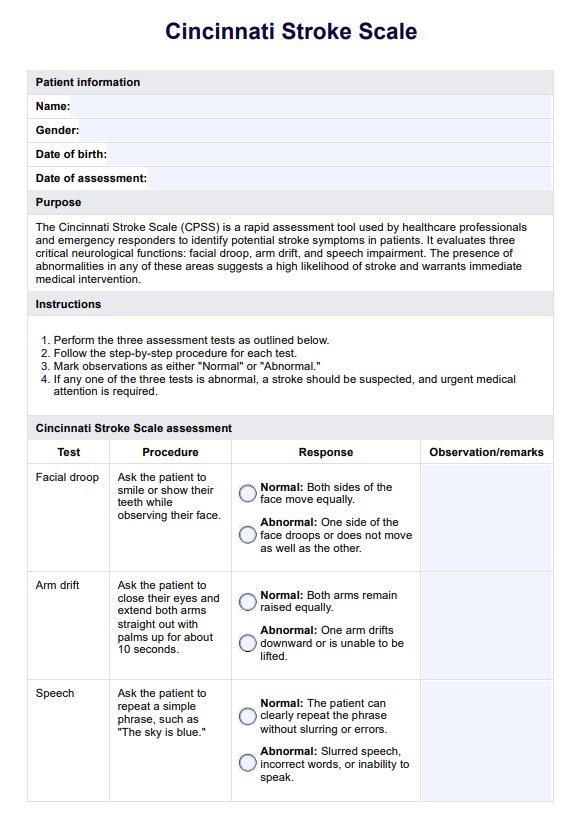The Cincinnati Stroke Scale, also known as the Cincinnati Prehospital Stroke Scale (CPSS), is a rapid assessment tool medical professionals use to identify patients with suspected stroke. It evaluates facial droop, arm drift, and speech abnormalities to determine the likelihood of acute ischemic stroke or other cerebrovascular diseases.

Cincinnati Stroke Scales
Download Carepatron's free Cincinnati Stroke Scale PDF template and aid rapid stroke assessment with detailed guidelines.
Cincinnati Stroke Scales Template
Commonly asked questions
The Cincinnati Stroke Scale's three components are facial droop, arm drift, and speech abnormalities. These neurological tests assess motor function and speech deficits, which are key indicators of stroke and support field assessment stroke triage.
The FAST stroke test is a simplified version of the Cincinnati Stroke Scale, emphasizing Face, Arm, Speech, and Time (FAST) to recognize stroke symptoms quickly. It reinforces the urgency of seeking medical attention when abnormalities are detected, improving early intervention and patient outcomes.
EHR and practice management software
Get started for free
*No credit card required
Free
$0/usd
Unlimited clients
Telehealth
1GB of storage
Client portal text
Automated billing and online payments











